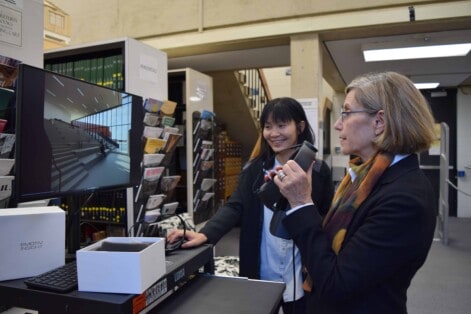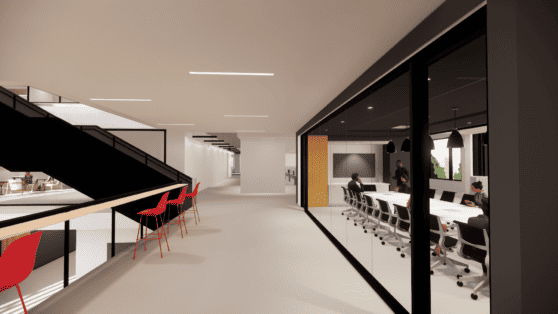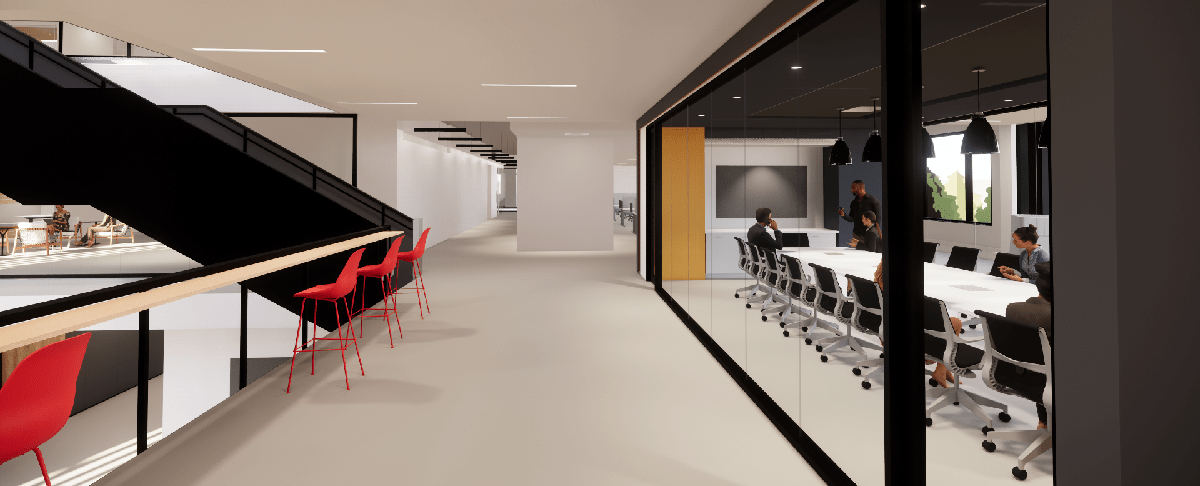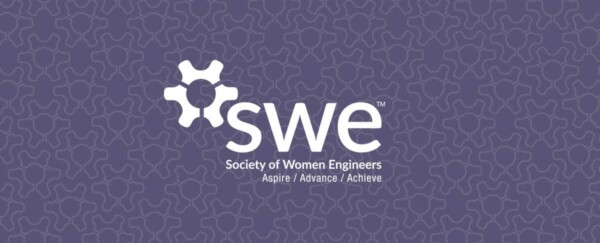Imagine going to work in a building that’s designed from the ground up to support your physical and mental health. What if its design could be influenced by how your brain responds to it in virtual reality, long before bricks meet mortar?

An experiment unfolding at the University of Maryland (UMD) is exploring just that. Madlen Simon, professor and associate dean of academic affairs and outreach at UMD’s School of Architecture, Planning and Preservation; Ming Hu, assistant professor; and Edward Bernat, Ph.D., associate professor and neuroscientist in the university’s department of psychology, are principal investigators, researching neuroscience and architecture. Their goal is to develop, test, and validate a data-driven approach to design, using virtual reality (VR) and electroencephalogram (EEG) technology. Collaborating with architecture firm Perkins + Will and a neuroscience laboratory, they are outlining technology-enabled, repeatable measures for quantifying how sustainable building features affect health and well-being.
Simon got the idea for the project through her involvement with the Academy of Neuroscience for Architecture (ANFA), a nonprofit whose mission is to link neuroscience to a growing understanding of human responses to the built environment. “One of my main interests is design thinking, and how people make design decisions,” she said. “Using VR and EEG can help us ‘get inside people’s heads’ to understand design thinking processes from a physiological point of view.”
Hu’s research area, sustainability and net-zero energy design, and her teaching area, architectural technology, have a solid base in engineering. “Both our fields of study impact what engineers do,” Simon said. “Sustainable building depends on architecture and engineering, so we are testing human response to both.”
After presenting results from a pilot study to ANFA, the team received an American Institute of Architects Upjohn Research Initiative grant to further develop the idea.
“Sustainable architecture is very important for our planet, but we’re not going to succeed at this if we can’t get people to accept sustainable design features,” Simon explained. “This experiment takes people inside a sustainable building through VR and measures their physiological response to specific features that are deemed sustainable. Then, we’re taking the same subjects through a comparable building with those features removed, measuring the response at the same exact points in both buildings and comparing them. We want to learn how people respond to and accept buildings that are considered sustainable. If we can design sustainable buildings that people like, then there’s a far greater chance of transforming the built environment into one that is sustainable for the planet.”
Hu is fascinated by this exploration of neuroscience and architecture. “I’ve always viewed myself as first a design engineer, and then an architect,” she said. “My core study was originally energy-efficient systems. Particularly as it relates to high performance and green building, engineers do a great deal to quantify green building benefits, such as energy savings. What’s missing now is the ‘softer’ side of those benefits, which is harder to quantify. Neuroscience should be another discipline considered part of the design world, as a valid method to quantify the social benefits and all the other benefits of green building. We need to combine brain science, engineering, and architecture. It shouldn’t just be one or the other.”
Simon agreed, adding, “Typically, the social sciences have been the ones to essentially control the question of how people respond to buildings. Neuroscience takes it out of the qualitative realm and into the quantitative.”
She pointed out that most building evaluations take place after they’re built. “People are given post-occupancy evaluations to find out what they think. At that point, if people have negative reactions, going back to make changes is either terribly expensive or not feasible at all. So, a key interest here is to find out how people think and feel about a building before it’s built. We’re trying to push human response into the decision-making up front rather than at the end.”

Anatomy of an experiment
Working with LEED Platinum-validated building plans from Perkins + Will, programmers created two virtual environments — one green, the other conventional — using Unreal® Engine, a sophisticated video-gaming graphics software. Then, more programming synchronized the EEG recording equipment with the VR experience. In addition to assessing brain activity continuously while subjects travel through the buildings, markers are inserted in the EEG record at the same specific points in the two virtual environments, to compare the same areas in the two design types.
A three-step tasking method was developed for measuring experiences of both buildings, employing video, still images, and a guided VR tour. The team is analyzing whether a fourth step, allowing participants to “freestyle” through the virtual buildings and letting them explore wherever they like, will be necessary.
“The EEG cap we’re using sets 96 electrodes in contact with the human scalp to detect brain waves,” Hu said. “So you can imagine the number of data sets we get, every second, every minute, and how we can compare the brain wave response to the conventional and the green buildings.”
Hu explained the five types of brain waves a person has in response to anything: alpha, beta, theta, delta, and gamma. “There are many different ideal brain wave activity levels for the different functions that people perform,” she said. “For example, if you want a student to study, they need concentration, attention, and focus, plus a little bit of stress. All of these factors cause a combination of different brain waves. That’s what Dr. Bernat is looking into — understanding the different combinations of brain waves people have when they encounter green versus nongreen built environments.”

Delving into the data
So far, 35 volunteer subjects have been tested at UMD’s Clinical and Cognitive Neuroscience Lab, and it takes about an hour to go through the series of exercises. Along with the EEG cap’s 96-channel recording of brain waves, heart rate and skin conductance are monitored. “First, we present a video of both virtual buildings in a way where we direct what they see,” Dr. Bernat said. “Then we show them a series of still images and collect what are called event-related potentials. Where the video is an overall experience, and we get measures of brain activity there, they’re more ‘smeary.’ That is, with the event-related measures, the researchers can closely look at the processing of each picture, using highly developed techniques to study activity during the first section following the image presentation. With the videos, on the other hand, the brain activity is much less time-locked to events, more continuous, so we use measures that are less discrete in time, but may more closely reflect the experience of being in the building.”
After the video and still presentations, subjects go into the VR environments, wearing a head-mounted display, and another EEG is taken. From the VR data, the researchers will assess both event-related and continuous activity.
Going through the green versus conventional environments revealed some interesting contrasts in the brain wave activity data. “From the video-based EEG collection, it’s quite clear that we see stronger engagement with the green building,” Dr. Bernat said. “There’s an increase in medial frontal cortex theta amplitude that is linked to attentional engagement and salience, meaning how a person pays attention to the environment. There’s also a reduction in parietal alpha, which also indicates stronger engagement — so, in effect, we’re seeing lower resting and higher attentional engagement. We also look at functional connectivity between the medial frontal and the dorsolateral prefrontal cortex, understood to index the engagement of control systems. These measures indicate how much people are thinking hard when they’re in the building.”
Subjectively, test subjects generally report preferring the green or sustainable building. “From the still images, we can show strong occipital (area that controls vision) activity increased by the green environment, and frontal (cognitive) activity that was decreased,” Dr. Bernat said. “We think that may have to do with the stronger visual features in the green building — like seeing through windows — that there’s more stimulation. The decrease in frontal activity we’re not really clear on how to interpret yet and need to do additional analyses to understand it. Our goal is to analyze, go through the data, and try to make some inferences about the health-related neurophysiological and physiological effects we observe. For instance, if skin conductance and heart rate go down, we measure those factors with the brain wave measures and correlate them. It helps us make a stronger inference about when stress is reduced.”
Dr. Bernat noted that people appear to become more “vigilant” in the green environment. “It’s not yet clear whether that means they would be more engaged in work tasks. As we get further into this, we’ll start to understand how to make an inference about whether the brain wave activity differences we’re seeing between the conventional and the green building are something that will make people more productive in the workplace.”
The methods for analyzing event-related potentials from still images are highly developed, and enable researchers to make many clear inferences. Now in the early stages of VR testing, Dr. Bernat expects to learn even more. “We’re using VR so we can look at all sorts of different information to help us decompose reactions to the virtual environments,” he said. “We expect that people will feel more immersed, and that the effects we gather from the video and still pictures will be more enhanced in the virtual reality environment.”
Subjects are also given questionnaires in order to test the difference between what they self-report and their actual physiological responses. “Right now, people very much self-report the kinds of experiences with virtual reality and after the buildings are built,” Dr. Bernat said. “So we’re implementing the same sorts of ratings into our protocol, then correlating the brain measures to those to see if we can show similar effects. The goal is to both validate and find out what is not valid about self-reporting. For example, when people report it’s more relaxing in the green building, then we want to know what brain mechanisms spur that, and in particular, if this could provide a better working environment.”

Virtual reality and emotional impact
As Hu and Simon researched what features to test in virtual reality, they looked at green building systems, including LEED, WELL Building, and the Living Building Challenge. The features they chose were daylight, views, social interaction, and spatial quality. Virtual reality brought these design elements to life — and their absence when removed stood in stark contrast.
Simon described taking the tour. “Visiting virtually, it became clear to me what the life of that building is like,” she said. “It’s kind of fantastic when you compare it with the conventional environment.”
“Walking” into the green building, Simon became immediately aware of co-workers. “There are people sitting in an amphitheater-style seating arrangement,” she said. “You walk upstairs, so you’re getting healthy exercise. And as you go down the hallway, you’re seeing people working on their laptops at a counter like what you might see in an upscale coffee shop, and on the right, people are working in glass-enclosed conference rooms, so you’re aware of people at all times — social engagement is high.
“Because of all the glass, you’re also bathed in daylight and connected to nature outside. As you move through, you encounter different styles of workspaces. People don’t have fixed desks here, and during the course of the day they can work in multiple places. Coffee tables and comfortable seating are scattered around. There’s a fantastic sense of human agency in this building, where you can essentially define your own work style. There are so many opportunities for chance encounters, which lead to conversations and the sort of collaborations that we enjoy so much.”
Conversely, in the conventional building, people sit at fixed desks in cubicles with high partitions that block views, or in closed offices and conference rooms. The hallways are windowless and sparsely lit with electric lights. Seating is less available in common areas, and there are no glimpses of nature outside. Opportunities for chance encounters and vital social interactions are lost.
“This virtual experience is very powerful, emotionally rich,” Simon said. “And it’s a great way to get to know a building. From a design-thinking point of view, I can trust this for showing plans, static renderings, or even a fly-through of a building to a client. They can ‘be’ inside their house before it’s built. Just looking at documents is a much more intellectual experience. Virtual reality gets your emotions involved.”
Leadership in Energy and Environmental Design (LEED)
According to the Environmental Protection Agency, Americans spend about 93% of their time indoors, where ventilation, CO2, and volatile organic compound (VOC) levels have a significant impact on cognitive function and physical health. Multiple studies have shown that spending time in a green versus conventionally built environment substantially improves cognitive skills test scores.
Developed by the U.S. Green Building Council, LEED is an internationally recognized certification system providing third-party verification that a building was designed and built using effective strategies for five key areas: energy savings, water efficiency, CO2 emissions reduction, improved indoor environmental quality, and stewardship of resources. It’s estimated that as of 2017, 6,633 buildings in existence had received the LEED Platinum rating. Many thousands more are participating in the validation process.
Driving toward sustainability
Simon and Hu share a strong desire to shift from architecture that destroys the environment to architecture in harmony with nature that supports human health. Hu, a LEED-accredited architect, has an acute sense of urgency about sustainability, born of firsthand experiences in her home city of Nanjing, China.
“I know how fast things can deteriorate if we don’t do the right thing,” she said. “Where I grew up, we had clean water, we had blue sky. I didn’t understand what smog was. Then things got very bad, very quickly, in just 10 to 15 years. And initially, I took a pure engineering approach because I wanted immediate and quantifiable solutions I could present to people — to show them facts. After I came to UMD, this initial approach broadened. I know that we can do a lot of calculation and modeling to prove how much energy we can save. But energy savings is just a small portion of the overall impacts of green building. There are health benefits, social benefits — and those things are more important, because they will fundamentally shift a mindset and make a behavior change. And that is what is going to drive the sustainability future.”
The team hopes the next wave of the project will include collaboration with an engineer at UMD who uses VR to design instruments and routinely has people perform complex tasks in a virtual environment. “We want to work with her to bring in some simple math or writing tasks,” Dr. Bernat said. “If we can measure performance and collect those event-related potentials from people ‘working’ in the virtual environment, we’ll be able to see how they are impacted by sustainable design.”
Blending neuroscience, architecture, and engineering to make buildings better for people and the planet generates an inspired sense of engagement among these collaborators. “This is a fantastically diverse team,” Simon said. “Ming and I come to this project from vastly different expertise sets, and with an architecture firm as a partner and Ed and his lab as partners, every time we get together it’s a tremendously informative, exciting experience.”
Interested in taking the video tour of the green and conventional buildings in this experiment? Go to: https://drive.google.com/file/d/1ufV9GYfOsABQo5E4vav2uugUOabbWPMA/view and https://drive.google.com/file/d/13ubWBjYgZU23jHujhmDCv1KBT4DhVOGc/view







